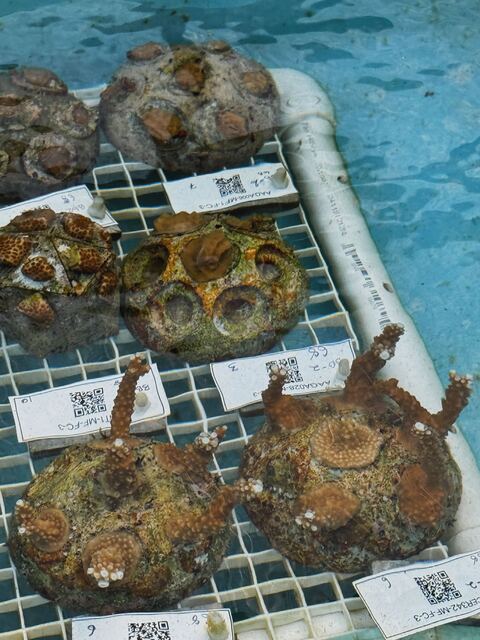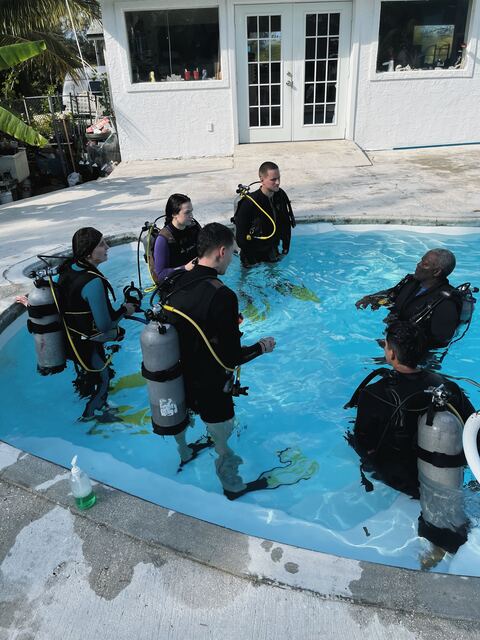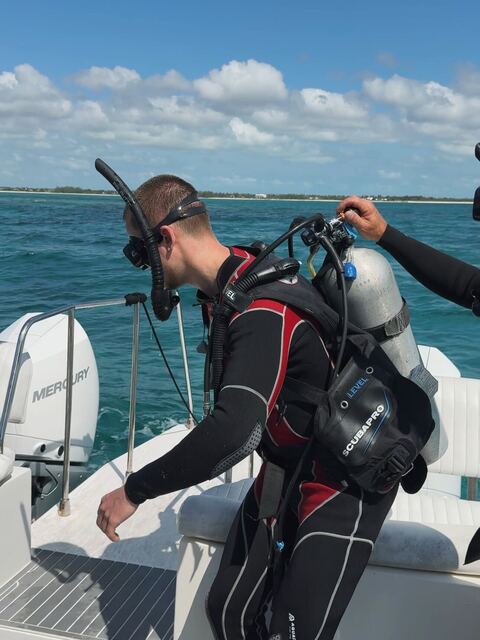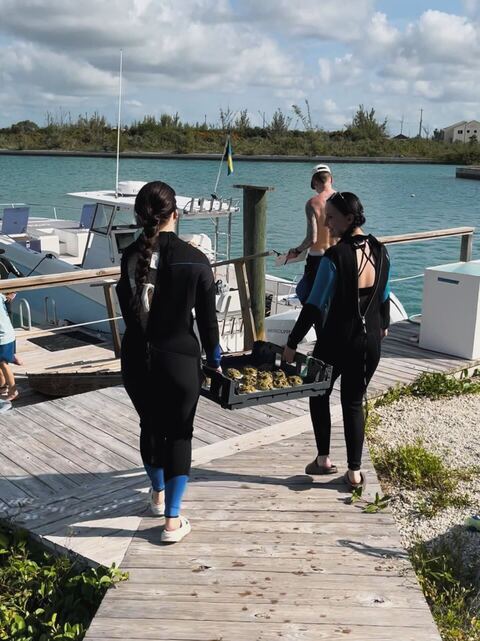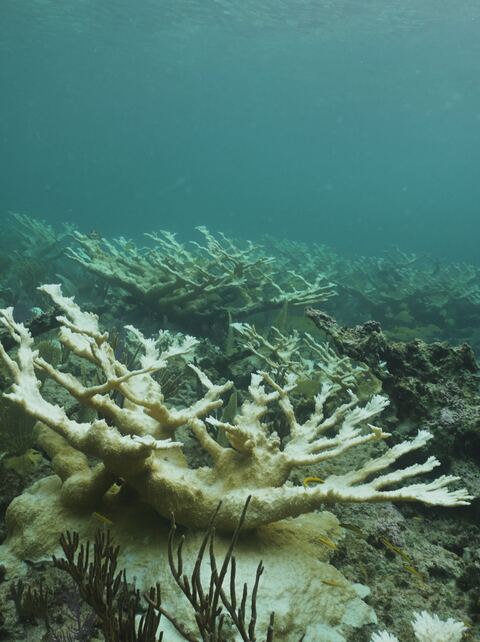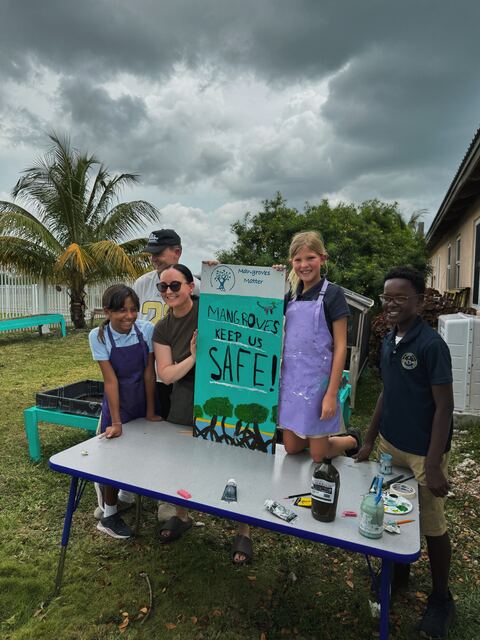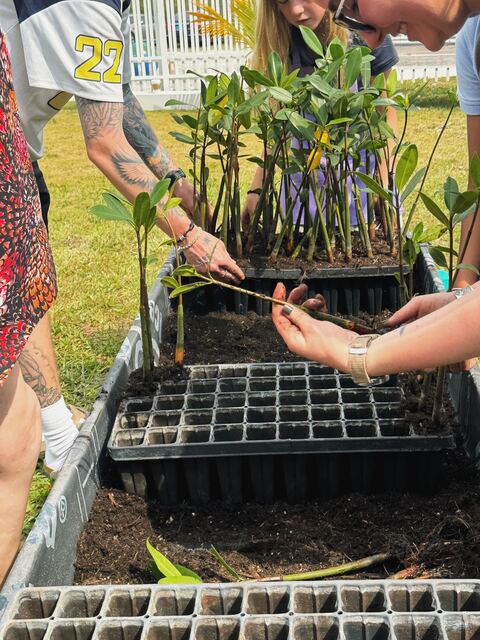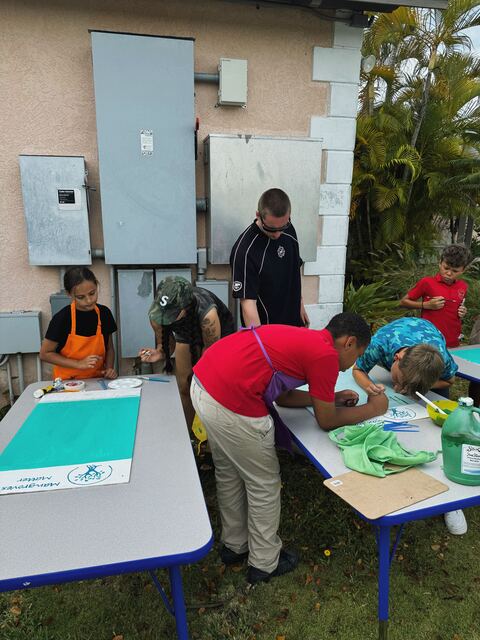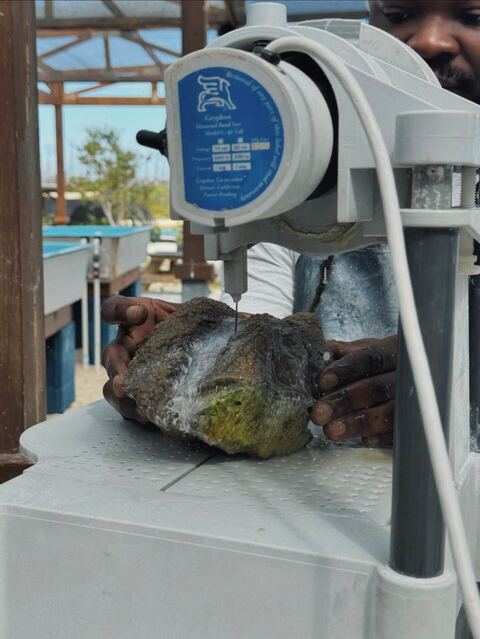MISSION 1 - BAHAMAS, 2024
In 2017, Indre and Lukas travelled to the Caribbean islands with the money they saved up from their summer jobs. They were quickly exposed to the damage that the locals and the islands endured due to hurricanes damaging the region every year.
During their last day in the Bahamas, they found out that another hurricane was approaching the islands, making them feel a fraction of the fear that people in these islands go through.
Several years later, when our first mission was considered, it only felt right to return to the Caribbean islands. A team of volunteers was assembled to research hurricanes and how to minimise the damage they cause.
WE DECIDED TO DONATE $100,000 TO A LEADING ENVIRONMENTAL INSTITUTION - coral vita, THAT IS PIONEERING ONE OF OUR PLANET'S GREATEST CHALLENGES: PRESERVING THE WORLD'S CORAL REEFS.
@CORALVITAREEFS CREATES HIGH-TECH CORAL FARMS THAT INCORPORATE INNOVATIVE METHODS TO RESTORE REEFS IN THE MOST EFFECTIVE WAY POSSIBLE. THEIR SCIENTIFIC TEAM HAS PARTNERED WITH THE MOST ADVANCED MARINE INSTITUTES, UTILIZING TECHNIQUES TO GROW CORAL UP TO 50 FASTER WHILE BOOSTING THEIR RESILIENCY AGAINST THE WARMING AND ACIDIFYING OCEANS THAT THREATEN THEIR SURVIVAL.
Why coral reefs?
Corals are a first line of defence for hurricanes as they reduce the wave energy by 97%. However, 60-80% of Caribbean corals are already dead which makes the islands and local communities extremely vulnerable.
Coral reefs are one of the most important ecosystems on the planet. They are a cornerstone of life in the ocean, supporting 25% of all marine species.
over 90% to die by 2050
Scientists project that due to climate change and direct human impacts, over 90% reefs will be dead by 2050.
Caribbean in dire state
over 80% of caribbean corals have perished, with a long history of human impact taking its toll.
Reduce wave energy by 97%
Coral reefs protect coasts against storm surges, waves, and erosion.
Support 25% of all marine life
Coral reefs are one of the most biodiverse ecosystems on earth.
Generate $30 billion annually
through coastal protection. fisheries. and tourism reefs are economic powerhouses.
What is killing reefs?
The widespread coral mortality occurring today is not a natural phenomenon—it is largely driven by human actions. While restoration plays a vital role in preserving ocean and community health, the most effective way to protect coral reefs is by preventing their destruction in the first place. Coral Vita collaborates with local partners and governments committed to progressive conservation policies. It is crucial that our political and industrial leaders swiftly adopt meaningful solutions to address the primary causes of reef degradation:
climate change
During extreme heat, coral reefs go through a process called "bleaching," where they lose the microalgae that give them their vibrant colors. These algae are crucial for coral survival, and without them, large areas of reefs can die rapidly. Climate change, along with changes in ocean chemistry, seriously threatens the survival of most coral reefs.
overfishing
Fish play a critical role in maintaining healthy coral reef ecosystems. Certain species of fish help keep corals clean by consuming macroalgae that can otherwise overgrow and smother them. Overfishing disrupts this balance, leading to unchecked algal growth that can kill corals. As reefs die and fish populations decline, algae increasingly dominate, preventing coral recovery.
direct human impacts
Coral reefs are highly vulnerable to direct human activities, such as poor development practices and pollution. Reefs near populated areas and agricultural lands are often destroyed by pollution and runoff. Sedimentation and poorly managed development projects can badly harm these fragile ecosystems.
Why Coral Vita?
Most coral farming today happens in ocean-based nurseries because they are affordable and good for growing fast-growing species like staghorn and elkhorn corals. However, these nurseries are not ideal for large-scale restoration since they often rely on grant funding. Coral Vita takes a different approach by growing corals in land-based farms, which offer several key benefits.
Land-based farms can use advanced techniques to speed up coral growth and support a wider variety of species. For example, a method called micro-fragmentation, developed by the Mote Marine Laboratory, can grow coral in months instead of decades. This is especially important for slow-growing species like brain and great star corals, which are essential to reefs but take too long to grow in ocean-based nurseries. Coral Vita's approach allows these corals to grow in months instead of decades.
Growing corals on land also lets Coral Vita use assisted evolution techniques to make corals more resilient to changing ocean conditions, such as warmer temperatures and acidification. By controlling the environment in which the corals grow, they can be better prepared to survive in the wild. Coral Vita works with leading experts in coral resilience and growth, positioning the company as a leader in protecting reefs for future generations.
Additionally, land-based farming avoids the risks faced by ocean-based nurseries, such as storms, boat accidents, or sudden temperature changes. While ocean-based farming is limited by the specific conditions of the site, land-based farms allow Coral Vita to grow a variety of native corals that match the needs of specific restoration sites by replicating their natural conditions. In short, Coral Vita’s land-based farming offers a practical and effective way to restore coral reefs on a large scale.

